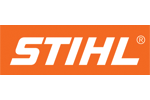Sale Zero-Turns

Explore our Zero Turn Mower Sales! Browse the featured units on sale below, but act fast – these incredible deals on Cub Cadet, Toro, Stihl, and Hustler Zero Turns may not last for long. Don't miss out on premium quality at unbeatable prices!
STORE PICKUP OR LOCAL DELIVERY ONLYSET UP AND PREP FEES MAY APPLY
ZT1 42IP
The Ultima Series ZT...
$2,999.00
$3,319.00
Currently Out Of Stock
STORE PICKUP OR LOCAL DELIVERY ONLY
SET UP AND PREP FEES MAY APPLY
ZT1 46
A 21.5 HP/726cc Kawas...
$3,299.00
$3,839.00
STORE PICKUP OR LOCAL DELIVERY ONLY
SET UP AND PREP FEES MAY APPLY
ZT1 54
A 24HP/...
$3,399.00
$3,949.00
STORE PICKUP OR LOCAL DELIVERY ONLYSET UP AND PREP FEES MAY APPLY
ZT1 42 FAB
The Cub Cadet Ultim...
$3,399.00
$3,699.00
Currently Out Of Stock
STORE PICKUP OR LOCAL DELIVERY ONLY
SET UP AND PREP FEES MAY APPLY
ZT1 50 KW
A p...
$3,599.00
$3,949.00
Currently Out Of Stock
Stihl RZ 142 ZERO-TURN
WB01-011-3600-US
STORE PICKUP OR LOCAL DELIVERY ONLY
The STIHL RZ 142 ze...
$3,999.99
SET UP AND PREP FEES MAY APPLY
STORE PICKUP OR LOCAL DELIVERY ONLY
Download Parts Manual
42" T...
$4,299.00
$4,799.00
STORE PICKUP OR LOCAL DELIVERY ONLY
SET UP AND PREP FEES MAY APPLY
Premium 23 hp 726cc Kawa...
$4,299.00
$4,879.00
STORE PICKUP OR LOCAL DELIVERY ONLY
SET UP AND PREP FEES MAY APPLY
A premium 23 HP/72...
$4,499.00
$5,089.00

































Connect with us